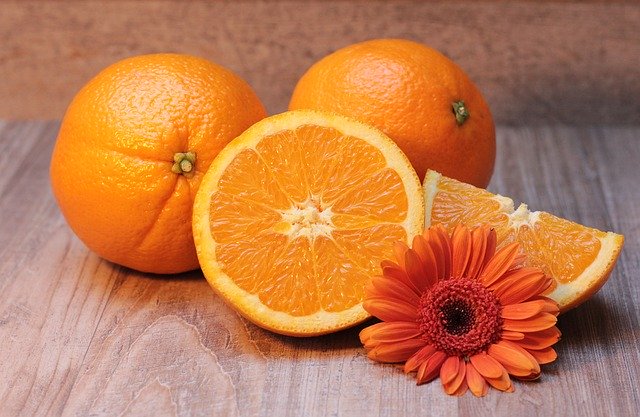FMI has compiled a study on beverage acidulants, which offers an analysis and forecast of the beverage acidulants market, in its publication titled, Beverage Acidulants Market: Global Industry Analysis 2013–2017 and Opportunity Assessment 2018–2027. This report on the beverage acidulants market covers some of the vital facets that are key influencing factors on the demand and supply of beverage acidulants over the next several years. An in-depth review of the growth drivers, potential challenges, different trends, and opportunities for market participants equip readers to fully comprehend the overall landscape of the beverage acidulants market. The report on the beverage acidulants market also covers the analysis of key regions and countries of particular interest that are anticipated to become frontrunners or remain laggards over the forecast period. The report includes a historical analysis of the market from 2013 to 2017, and provides forecasts from 2018 to 2027 in terms of volume in metric tons and revenue in US$.
Beverage acidulants are additives that are added to give a sharp taste to finished products or beverages. Acids, in the form of acidulants, have been used for decades as important contributors to flavour, and the environment that is produced by the acid prohibits the growth of many harmful microorganisms.
Most beverages need the inclusion of an acidulant to give a sour or acidic taste.
Major beverage acidulants include acetic acid, fumaric acid, citric acid, malic acid, phosphoric acid, lactic acid, and tartaric acid. Each beverage acidulant has its own taste profiles. The most common, citric acid, has a lemony taste, while acetic acid possesses a familiar vinegar flavour. Also, tartaric acid gives a sharp taste that doesn’t last for a long time, while malic acid possesses a sharp taste with a slower build up. Lactic acid has a flavour that lasts and is relatively mild.
Natural foods from which the acidulants are extracted include oranges, tomatoes, apples, lemons, and citrus fruits. Citric acid is derived from citrus fruits, and it is by far the most widely used acid in food and beverage products. Initially, it could only be extracted from citrus fruits, but now, most of it is prepared by fermentation. Around half of all citric acid in food and beverages is used as a beverage acidulant.
Download Sample Copy@ https://www.futuremarketinsights.com/reports/sample/rep-gb-8628
The ethnic flavors emerging in soft drinks are having an increasingly significant impact on new product developments in the beverage industry, resulting in an increased demand for beverage acidulants. A growing Hispanic population in the U.S. has helped summer drinks gain a significant share from a broad base of consumers. The use of acidulants in beverages has experienced a considerable hike with attention on ethnic flavors.

In order to provide the users of this report with a comprehensive view of the beverage acidulants market, we have included a detailed competitive analysis, key beverage acidulants market players, and their strategy overview. A dashboard view of the entire landscape provides a comprehensive comparison of beverage acidulant manufacturers on metrics such as total revenue, product offerings, and key differentiators. The study encompasses beverage acidulants market attractiveness analysis by product type, application, form, and nature. The report also covers detailed drivers, restraints, trends, and opportunities assessment in the beverage acidulants market.
The report includes company profiles and revenue generated from companies across North America, Latin America, Europe, China, Asia Pacific excluding China, and the Middle East & Africa. By product type, the global beverage acidulants market is segmented into citric acid, acetic acid, fumaric acid, lactic acid, phosphoric acid, malic acid, and tartaric acid. Citric acid beverage acidulants are expected to have a substantial share in the beverage acidulants market, globally. By application, the global beverage acidulants market is segmented into soft drinks, dairy-based beverages, fruit juices and concentrates, alcoholic beverages, and energy drinks. By form, the global beverage acidulants market is segmented into liquid, powder, and granules. The powder form has a significant share in the market, in terms of both, revenue and quantity. By nature, the global beverage acidulants market is segmented into synthetic and organic. Synthetic beverage acidulants are preferred, however, the organic segment is growing at a significant rate.
For estimation of the market size, the production of different types of beverage acidulants is analyzed, which is then cross-referenced with the quantity utilized for various end use applications by analyzing permissible limits and review of ingredient labels. This was then validated with the production capacity, share of volume and revenue market share of key players offering beverage acidulant products. The prices of the products have been collected at the manufacturer level to arrive at the market size for beverage acidulants.
Ask an Analyst @ https://www.futuremarketinsights.com/ask-question/rep-gb-8628
The report provides detailed competitive and company profiles of key participants operating in the global beverage acidulants market. Some of the major companies operating in the worldwide beverage acidulants market are Cargill, Inc., Tate and Lyle, Northeast Pharmaceutical Group Co., Ltd., Batory Nutra, Archer Daniels Midland, Cobion N.V., DairyChem, Hexagon Overseas, Parry Enterprises India Ltd., FBC Industries, Inc., Weifang Ensign Industry Co., Ltd., Jones Hamilton Co., Balchem Ingredient Solution, The Sumo Food Ingredients (SFI) (Chemelco International B.V. Products), Bartek Ingredients Inc. (TorQuest Partners), Shephard Bros., Suntran Industrial Group Ltd., and Distillerie Mazzari S.p.A., among others.
Beverage Acidulants Market – By Product Type
- Citric Acid
- Acetic Acid
- Fumaric Acid
- Lactic Acid
- Phosphoric Acid
- Malic Acid
- Tartaric Acid
- Others
Beverage Acidulants Market – By Application
- Soft Drinks
- Dairy-based Beverages
- Fruit Juices and Concentrates
- Alcoholic Beverages
- Energy Drinks
Beverage Acidulants Market – By Form
- Powder
- Liquid
- Granules
Request for Covid19 Impact Analysis: https://www.futuremarketinsights.com/covid19/rep-gb-8628
Beverage Acidulants Market – By Nature
- Synthetic
- Organic
Beverage Acidulants Market – By Region
- North America
- Latin America
- Europe
- China
- Asia Pacific excluding China
- Middle East & Africa



